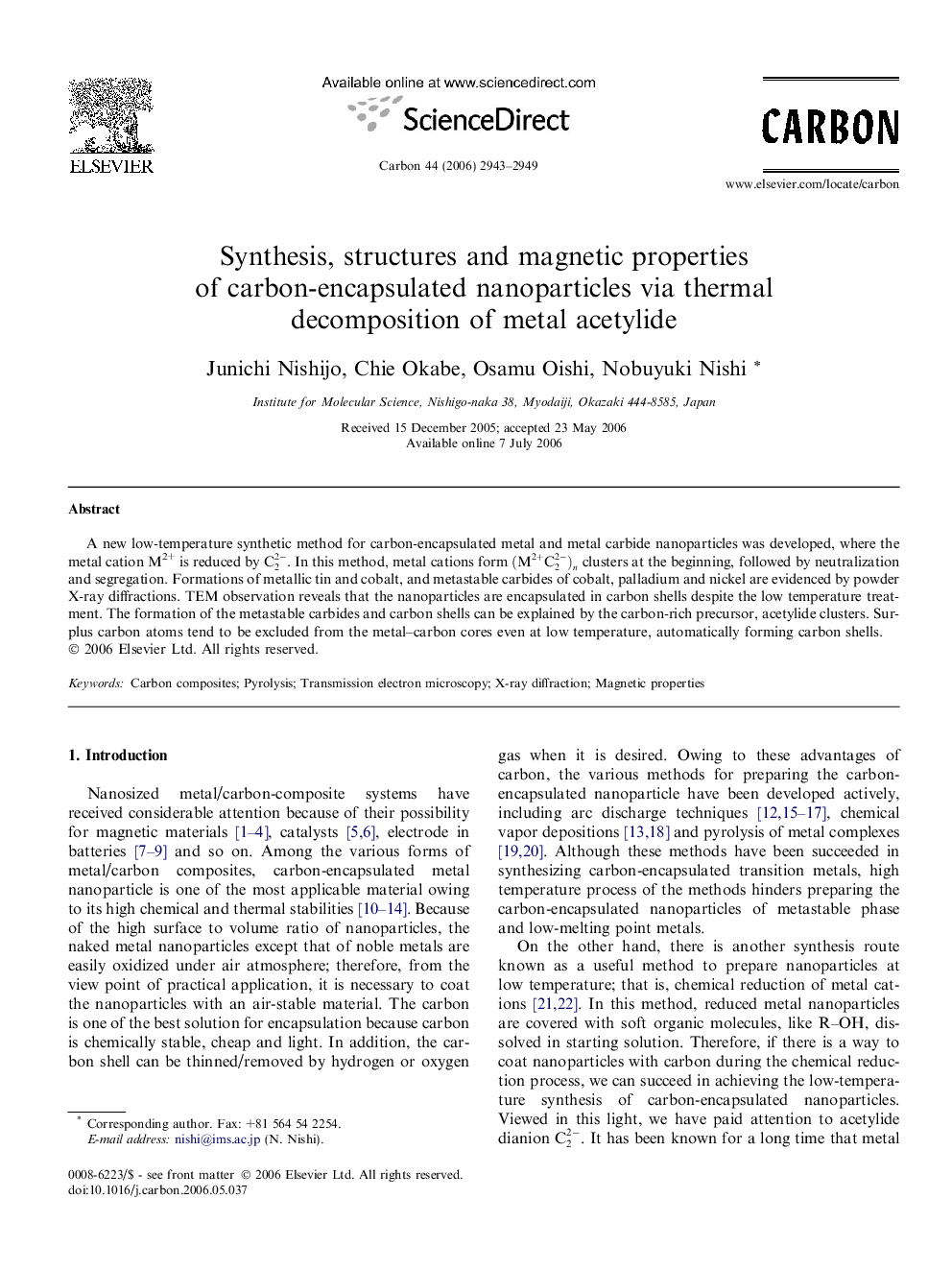| Article ID | Journal | Published Year | Pages | File Type |
|---|---|---|---|---|
| 1419200 | Carbon | 2006 | 7 Pages |
A new low-temperature synthetic method for carbon-encapsulated metal and metal carbide nanoparticles was developed, where the metal cation M2+ is reduced by C22-. In this method, metal cations form (M2+C22-)n clusters at the beginning, followed by neutralization and segregation. Formations of metallic tin and cobalt, and metastable carbides of cobalt, palladium and nickel are evidenced by powder X-ray diffractions. TEM observation reveals that the nanoparticles are encapsulated in carbon shells despite the low temperature treatment. The formation of the metastable carbides and carbon shells can be explained by the carbon-rich precursor, acetylide clusters. Surplus carbon atoms tend to be excluded from the metal–carbon cores even at low temperature, automatically forming carbon shells.
